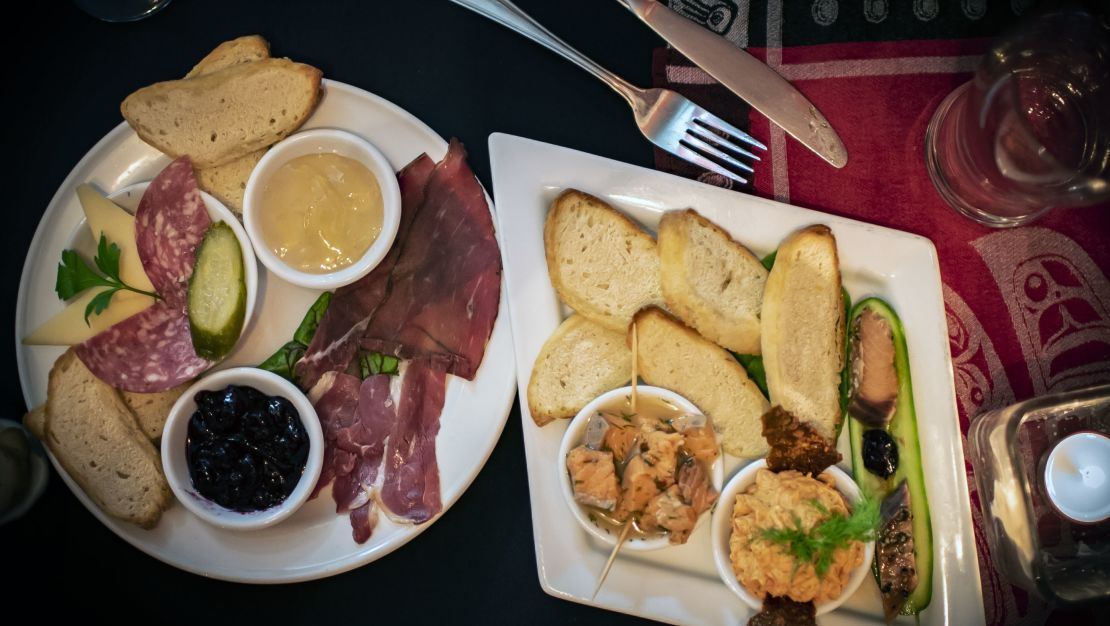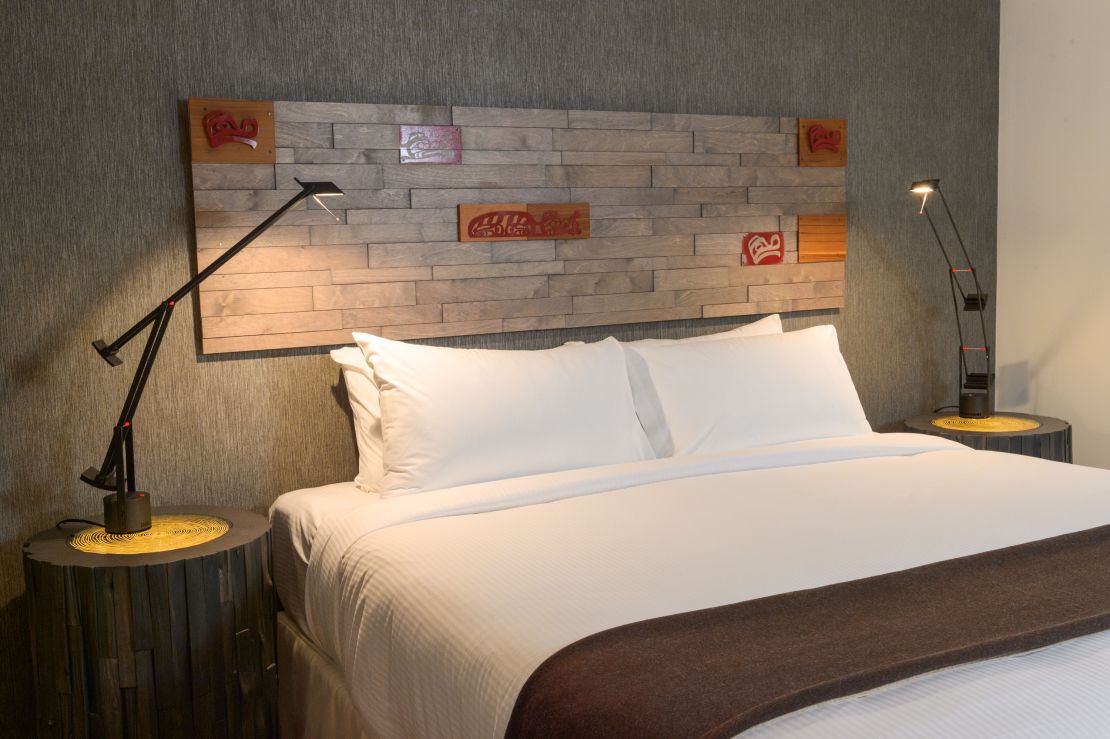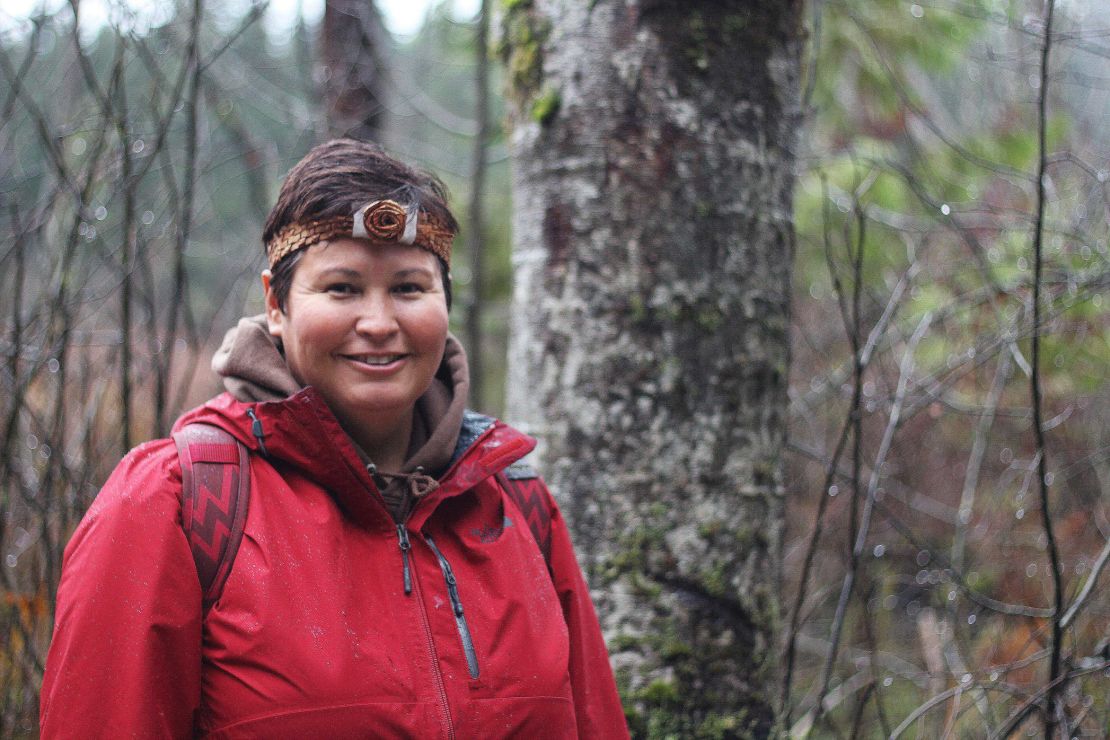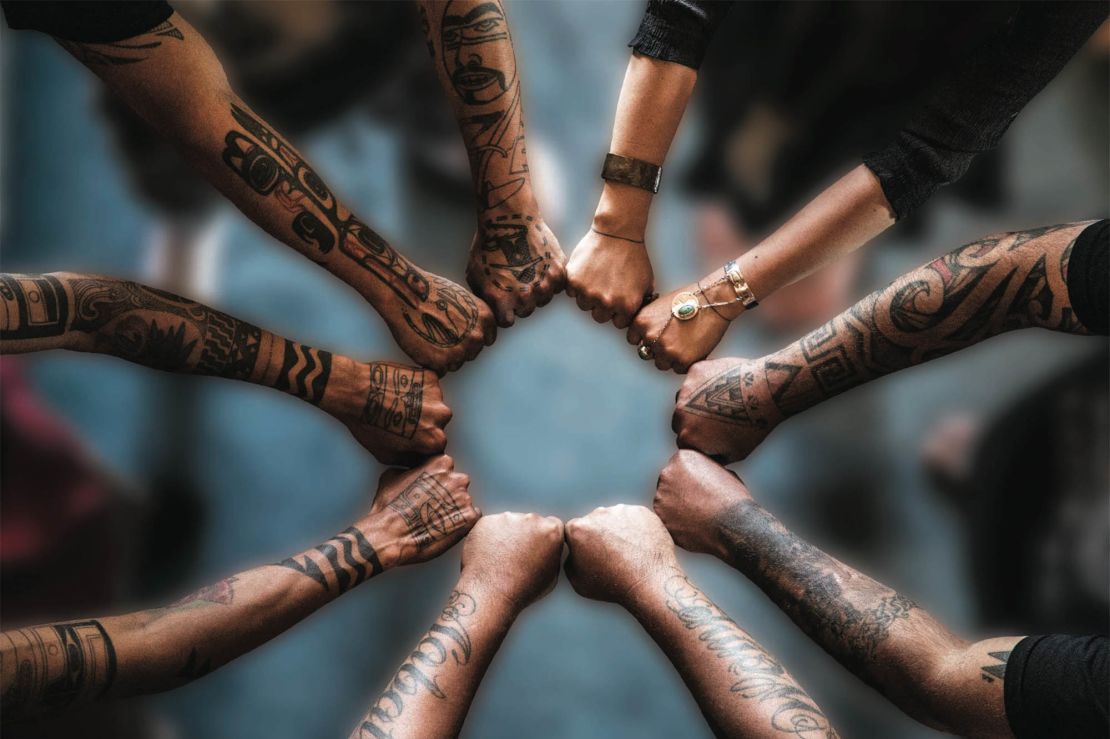Salmon, elk, bison and boar. The prized oily fish oolichan. These staples of Indigenous cuisine in Canada reconnected restaurateur Inez Cook with her First Nations heritage eight years ago.
Today, she’s still discovering and sharing that heritage with diners at her Vancouver restaurant Salmon n’ Bannock.
Cook’s restaurant is one of a number of places in the seaport city where visitors can learn about the cultures of the Indigenous peoples of British Columbia.
“We have the mountains, we have the ocean. We already have a beautiful backdrop, but if you can come here and actually engage in some of the cultural activities of the First Nations people, it just adds so much more to the trip,” said Cook, a veteran flight attendant who had long dreamed of owning a restaurant.
Connecting with her Nuxalk Nation roots has added a lot to Cook’s own journey.
She was adopted out to a white family as part of the Sixties Scoop – a period from the 1960s into the ’80s when the government of Canada removed thousands of Indigenous children from their families.

It wasn’t until Cook opened Salmon n’ Bannock during the Winter Olympics in 2010 that she rediscovered her past. Nuxalk people came to investigate when they heard about the restaurant and quickly connected her with members of her birth family to the north in Bella Coola.
“It’s catapulted into so much more than a business. It’s brought me back to my roots and my heritage,” said Cook, who received her traditional name and met hundreds of relatives in Bella Coola during a three-day potlatch, a traditional social, ceremonial and economic gathering.
British Columbia is home to nearly 200 First Nations, about a third of all First Nations in Canada. First Nations, Inuit and Métis are the three groups of Aboriginal peoples in Canada.
There are more than 200 Indigenous tourism businesses in BC, according to the Indigenous Tourism Association of British Columbia. That’s an 85% increase over 2006.
Salmon n’ Bannock’s staff represents a range of Indigenous peoples. Baker Nicole Johnny is from the Musqueam Nation. Jeremy Belcourt, who recently left his position as head chef, is from Nuxalk ancestry and the Cree Métis.
Bannock, a traditional quick bread that takes its name from the Scots, is made from scratch daily at the restaurant and served with berry jam and a crisp, subtle cedar jelly.
It’s also a building block for elk and bison tacos and burgers and served alongside main dishes such as elk brisket with celery root mashed potatoes, birch-glazed wild sockeye salmon and braised free-range bison back ribs.
Wines from Indigenous-owned wineries pair with ingredients from land and sea, including occasional offerings of smoked oolichan, a nutrient-rich fish highly prized for its oil.
Salmon n’ Bannock, 7-1128 West Broadway, Vancouver, BC; 604-568-8971
An aboriginal hotel

Salmon n’ Bannock is the only Indigenous restaurant serving dinner in Vancouver, but there’s a new brunch option – plus unique, art-filled accommodation – at Skwachàys Lodge Aboriginal Hotel & Gallery.
BigHeart Bannock Cultural Café serves weekend brunch – baked bannock French toast, bison sausage hash and more – at the lodge on Pender Street on the border of the city’s Gastown and Chinatown districts. Brunch is open to both guests and non-guests in the dining room behind the lodge’s art gallery.
The lodge, owned and operated by the non-profit Vancouver Native Housing Society, has 18 striking hotel suites envisioned by a group of Indigenous artists on the top floors.
The Water Suite focuses on orca and salmon and features the smooth, undulating edges created by running water. Other suites pay tribute to traditional symbols and objects created by Indigenous peoples.
An artist-in-residence program occupies much of the rest of the lodge, offering subsidized housing and career development for practicing Indigenous artists.
The gallery at Skwachàys Lodge sells original work from a range of artists. There’s also a rooftop sweat lodge and smudge room where private purification ceremonies can be arranged in advance.
Skwachàys Lodge, 29/31 W. Pender St., Vancouver, BC; 604-687-3589
Learning the land

Land and sea are deeply interwoven in Indigenous cultures, and First Nations tour operators in and around Vancouver are sharing those ties to nature with urban visitors.
Candace Campo, an educator and owner of Talaysay Tours, is happy to teach others about the very deep Aboriginal roots here.
“It’s really a celebration of what our parents and our grandparents have given us, and to be able to work on the land is very special,” said Campo, who was born Sechelt and married into the Squamish Nation.
Talaysay Tours offers a range of programs – from a Sail the Salish Sea tour on the Sunshine Coast to a Talking Trees tour in Vancouver’s spectacular Stanley Park.
The park, originally home to the Tsleil-Waututh, Musqueam and Squamish First Nations, encompasses 400 hectares of lush, invigorating West Coast rainforest.
The Talking Trees tour meanders among towering giants for a closer look at the Western Red Cedar – used for longhouses, canoes, woven clothing and more – and other flora integral to Indigenous cultures.
“Each tribe utilized between 100 and 150 different plants and trees for food and medicine,” Campo said. “Food and medicine are not separate. Food is medicine. And I think Western society is starting to understand that as well – that nutrients are the medicine we need for our bodies to live a healthy life.”
Another tour operator, Takaya Tours, offers canoe and kayak tours from May through October that highlight songs, legends and ancient Aboriginal village sites.
Talaysay Tours, info@talaysay.com or 1-800-605-4643
Takaya Tours, groups@takayatours.com or 604-904-7410
Artistic traditions

Indigenous art greets passengers at Vancouver International Airport, and there are opportunities to see striking work throughout the city.
At the airport, a bronze sculpture with jade green patina by Haida artist Bill Reid – “The Spirit of Haida Gwaii: The Jade Canoe” – sits in the third level of the international terminal.
Reid (1920-1998) was a master goldsmith, carver, sculptor and CBC broadcaster who was a member of the Raven clan from T’aanuu through his mother.
Downtown, the Bill Reid Gallery of Northwest Coast Art showcases some of Reid’s work – including stunning pieces of gold and silver jewelry incorporating ravens, eagles, grizzly bears and frogs – and that of other contemporary Indigenous artists.
The gallery celebrated its 10th anniversary in June when it reopened after a $1.8 million renovation.
A current exhibit, “Body Language: Reawakening Cultural Tattooing of the Northwest,” highlights the revival of Indigenous tattooing practices on the Northwest Coast and will be on view through January 13, 2019.
The exhibition features a lot of photography plus examples of links between tattooing and traditional clothing and jewelry. Many pieces of jewelry were inspired after missionaries forbade tattooing, either replacing or covering up tattoos.
The Museum of Anthropology at the University of British Columbia, which sits on the traditional land of the Musqueam people, showcases works from all over the world with a particular emphasis on Indigenous art from the Northwest Coast.
The waterfront museum, which is home to the world’s largest collection of works by Bill Reid, is housed in a modern building inspired by the cedar post and beam constructions found in traditional Northwest Coast Aboriginal villages.
Outside, water views remind visitors of the intermingling of natural elements at the core of the Indigenous cultures of British Columbia.
Bill Reid Gallery of Northwest Coast Art, 639 Hornby Street, Vancouver, BC; 604-682-3455
Museum of Anthropology at UBC, 6393 NW Marine Drive, Vancouver, BC; 604-822-5087





















